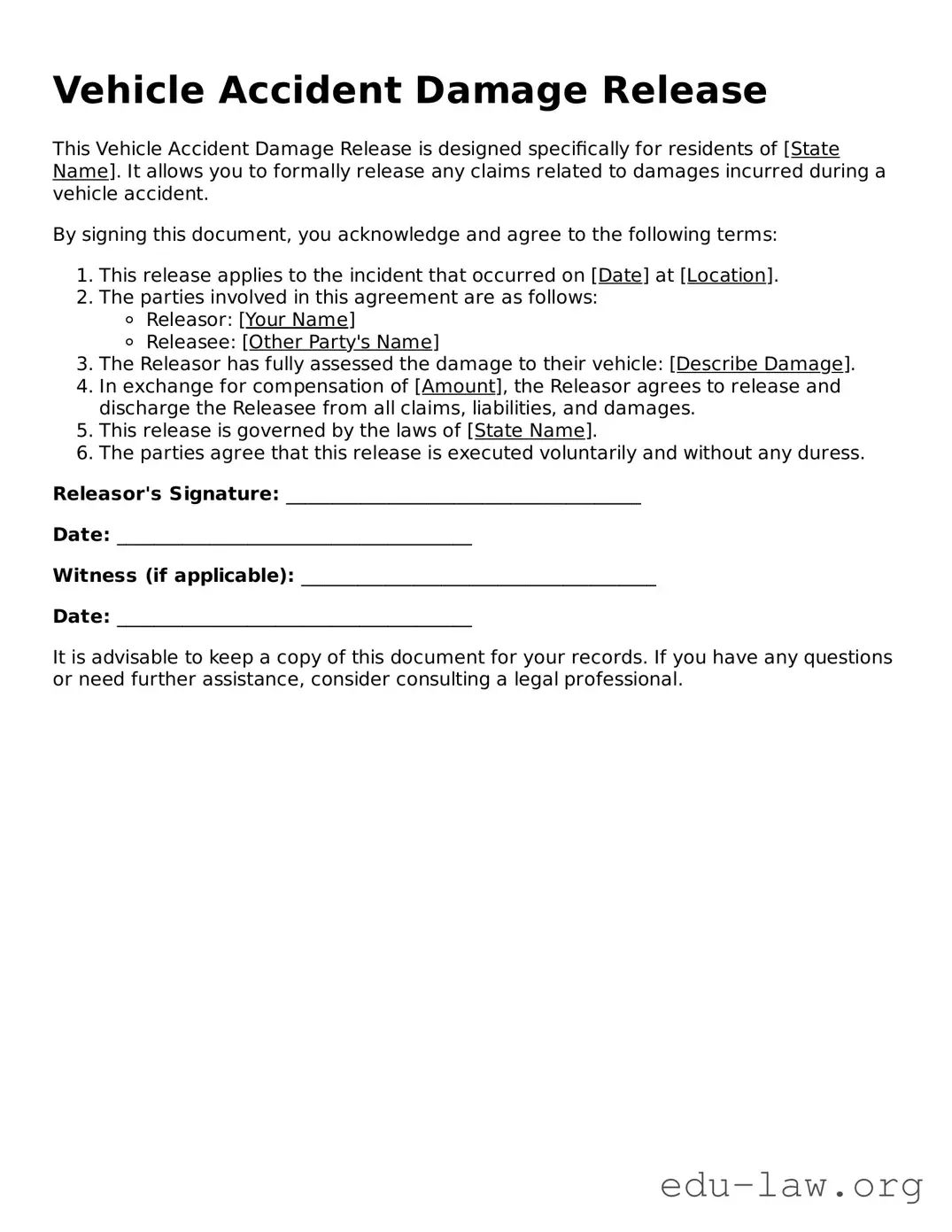The Release of Liability Waiver is a document that protects an organization or individual from being held liable for injuries or damages that may occur during certain activities. Similar to the Vehicle Accident Damage Release form, it is often signed before engaging in activities like sports events or recreational activities. This waiver clearly outlines the potential risks involved and ensures that participants acknowledge these risks, thereby limiting potential legal claims in the event of an accident.
The Settlement Agreement serves as another closely related document. In the context of vehicle accidents, a Settlement Agreement outlines the terms under which the parties involved agree to resolve their claims without going to court. This agreement often includes compensation amounts, timelines, and the stipulation that all claims related to the incident have been fully settled, offering a layer of protection similar to the release form.
An Indemnity Agreement shares the goal of protecting a party from costs associated with claims or damages. In this context, if a driver is found liable for an accident, the indemnity clause may ensure that the driver holds another party harmless, effectively shifting responsibility for financial losses. This parallels the Vehicle Accident Damage Release form, which often aims to prevent future financial liability resulting from the accident.
The Non-Disclosure Agreement (NDA) is a document that keeps sensitive information confidential. While it might not seem directly related to vehicle accidents, an NDA can be used in settlement cases to ensure that the details of the agreement or any received compensation remain private. This is crucial for parties who want to protect their reputations or business interests, much like how a Release form protects involved parties from future claims.
The Full and Final Release is another vital document, closely resembling the Vehicle Accident Damage Release form. This type of agreement is executed when parties agree that they have settled all claims related to a specific incident, including hidden and future claims. This ensures that no further claims can arise after the settlement, providing lasting peace of mind to the involved parties.
The Liability Insurance Policy is a document that outlines the terms under which an insurance company provides coverage for damages or injuries arising from accidents. Similar to the Vehicle Accident Damage Release, it helps define the responsibilities of both the insured and the insurer, effectively managing potential claims arising from accidents. Insurance policies often require the insured to release certain claims in exchange for coverage.
An Affidavit of Release is a formal statement made under oath, declaring that a party has released another from liability. This document can serve a similar purpose to the Vehicle Accident Damage Release form by documenting that the releasing party willingly relinquishes any claims or rights to seek damages. It provides clear evidence of the agreement in legal matters.
An Accident Report can provide crucial insights into the circumstances surrounding a vehicle accident. While it does not directly release liability like the Vehicle Accident Damage Release form, it captures the essential facts, such as involved parties, damages, and witness accounts. This report can corroborate claims made in a release form, supporting the terms agreed upon by the parties involved.
The Power of Attorney can have an indirect relationship with the Vehicle Accident Damage Release form. In situations where an individual cannot represent themselves, a Power of Attorney allows another person to act on their behalf, potentially signing the release form. This document assures that the release is signed by a legally appointed representative, respecting the intentions of the original party.
Lastly, the Mutual Release Agreement signifies that both parties waive any future claims against each other. It mirrors the Vehicle Accident Damage Release form by emphasizing that all possible claims arising from an accident are resolved. This agreement adds further security for both parties involved, as it clearly delineates the boundaries of liability going forward.
